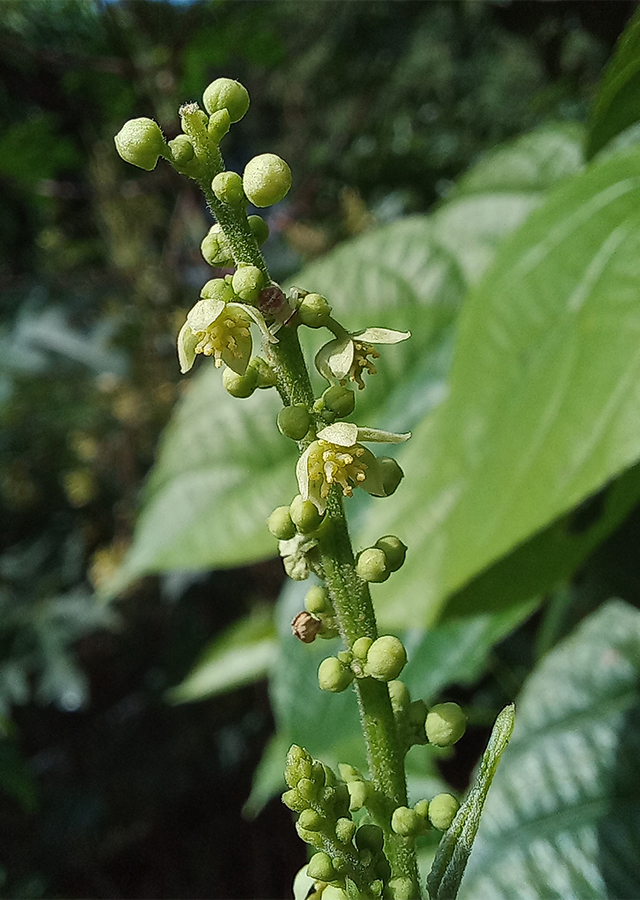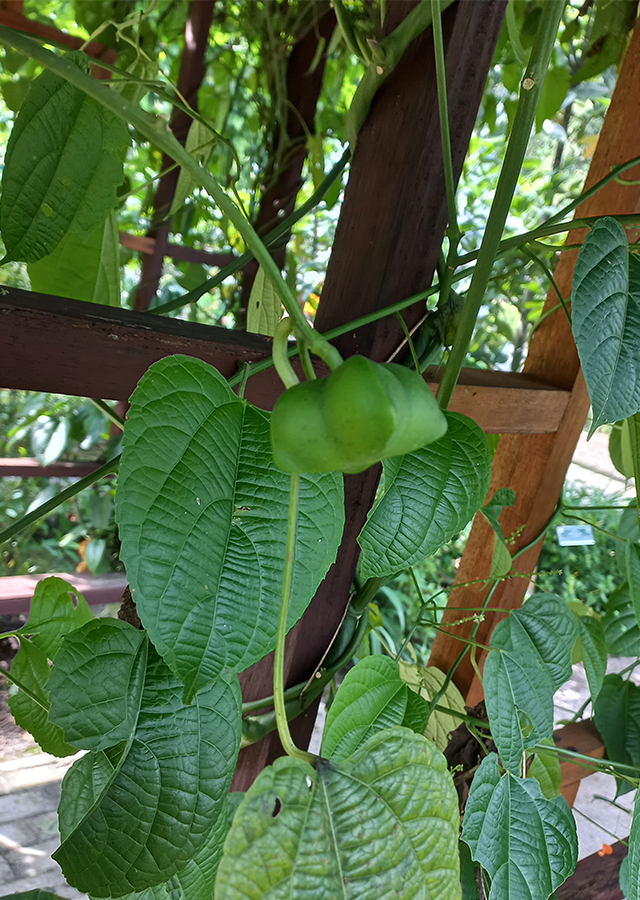Traditional Herbs from Plukenetia volubilis
maintain_heart_health
- Prepare sacha inchi seeds, wash them thoroughly.
- Fry without oil (grilled).\u00a0
- Crack the outer shell.\u00a0
- Eat the white inner seeds.
improve blood circulation
- Prepare sacha inchi seeds, wash them thoroughly.
- Fry without oil (grilled).
- Crack the skin outside.\u00a0
- Choose it using a blender until it becomes powder.
- Put it in a capsule so it's easy to swallow.\u00a0
- Take the capsule once a day as a supplement.
What is Plukenetia volubilis Looks like??



Parts of Plukenetia volubilis that could be used
- Leaves
- Seeds
Plukenetia volubilis Distribution
The sacha inchi plant originates from South America (Brazil, Bolivia, Peru, Ecuador, Colombia, Venezuela, Suriname), Windward Islands - Caribbean. Sacha inchi leaves can be cooked and eaten as a vegetable and used in making tea. Roasted seeds have an extraordinary taste, rich in oil and protein, and oil extract from sacha inchi seeds can be used in processing food. These nuts also contain many other bioactive ingredients that are good for health, such as maintaining heart health, so many people consume them.Agroecology of Plukenetia volubilis
Sacha inchi grows at temperatures between 10 and 37 °C in a variety of soil types, but sandy soil is preferred and good drainage is required. Fruit can be produced to altitudes of at least 1490 m, but yields decrease above 900 m. Sacha inchi can grow in acidic soil (but optimal growth in neutral pH soil) and alluvial plains near rivers.
Morphology of Plukenetia volubilis
- Climbing stems, cylindrical, green, smooth.
- Leaves are triangular to ovate with truncated to heart-shaped bases, pinnate leaf veins, green color, serrated edges. Leaf length between 10-12 cm, leaf width 8-10 cm with petioles 2-6 cm.
- Flowers in bouquets, emerging from axial or terminal stems, consisting of one or two flowers, inconspicuous color.
- Sacha inchi bean fruit is 4 to 5-pointed star-shaped with a hard, layered skin texture 3-5 cm in diameter. One fruit has 4-5 seeds.
- Seeds\u00a0young fruit are green, old fruit are blackish brown.
Cultivation of Plukenetia volubilis
- Sacha inchi reproduces generatively using seeds, sacha inchi seeds that are good for use as seeds are seeds that come from trees that are 3 years old or more. To speed up germination, sacha inchi seeds are soaked in warm water (temperature 50\u00b0C) and left for 24 hours.
- Vegetatively sacha inchi is done through cuttings with auxin or by grafting rootstock.
- Cultivation with seeds produces flowers approximately 3-5 months after planting, while fruit ripening occurs after approximately 8-9 months.
Plukenetia volubilis, more details :
Chemical Content of Plukenetia volubilisPolyunsaturated fatty acids (lenolenic acid, linoleic acid, tocopherol), sterols (sitosterol, campesterol, stigmasterol 5- avenasterol), phenolic compounds (alcohols, isocumarins, flavonoids, secoiridoids, and lignans), aldehydes, hydrocarbons, furans, carboxylic acids , terpenoids, essential amino acids (leucine, tyrosine, isoleucine, lysine, and tryptophan), omega 3, omega 6, and omega 9.
Benefits of Plukenetia volubilis
Rejuvenates and revitalizes skin, relieves muscle pain and rheumatism, controls cholesterol, gastrointestinal health, food supplement, improves blood circulation. Prevent common diseases that may be related to oxidative damage, such as coronary heart disease, stroke, and cancer.
Simplisia of Plukenetia volubilis
- Prepare sacha inchi seeds, wash them thoroughly.
- Fry without oil (grilled) or roast in the oven.
- Crack the outer skin then grind the inner seeds using a blender until they become powder.\u00a0
- Store the simplicia powder in closed or airtight container.
Another Facts for Plukenetia volubilis :
Synonym of Plukenetia volubilisFragariopsis paxii Pittier, Plukenetia macrostyla Ule, Plukenetia peruviana Müll.Arg.
Habitus of Plukenetia volubilis
Creepers. Creeping shrub, annual, up to 2 m high
Habitat of Plukenetia volubilis
- Riverside", "Forest", "Land
No comments:
Post a Comment